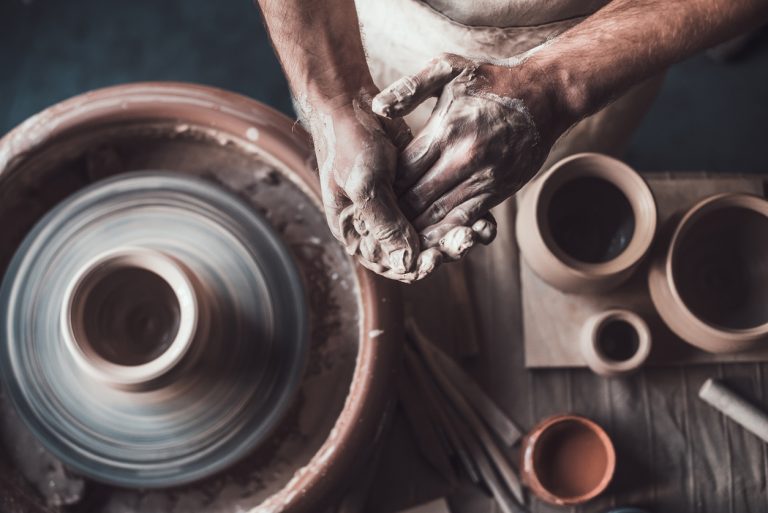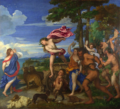Arts and crafts have always existed as two rather distinct categories. Whilst ‘fine art’ typically denotes objects of conceptual and aesthetic rigour, the TATE glossary of terms defines craft as “a form of making which generally produces an object that has a function; such as something you can wear, or eat or drink from.”
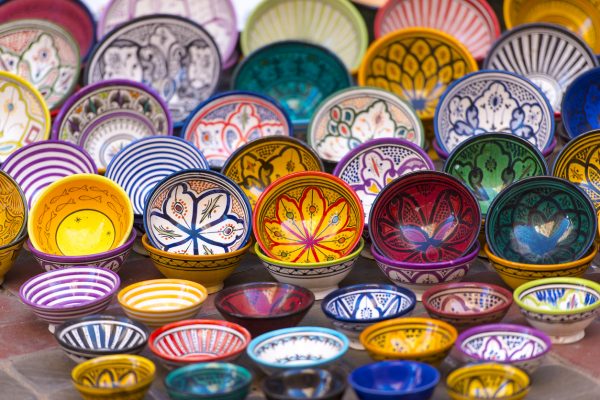
It is a distinction that has historically been guarded by art historians and critics alike, but today the boundaries between fine art and craft practices such as ceramics, weaving, printmaking and glassblowing are now much more porous. In this article, we focus on the return of traditional craft that is taking the art world by storm.
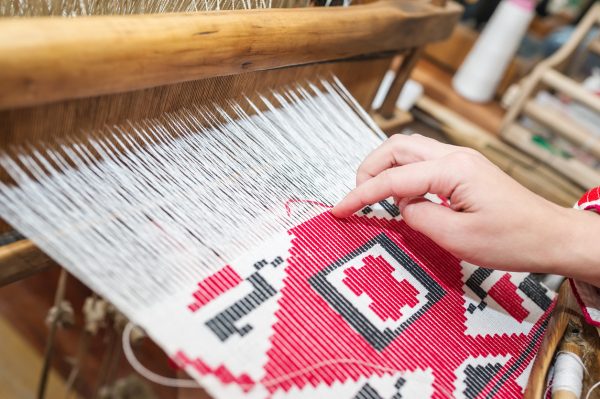
Historical division between art and craft
In medieval times, craftsmen were valued as a group for their adherence to particular traditions, whether that be in Murano glass or Flemish lace. In the Western world, the distinction between art and craft emerged from Florence in the 1400s, when patrons began paying artists on the basis of merit rather than square footage, as had previously been the case. This new system prioritised individual creativity rather than collective production. Hence, ‘artists’ were elevated to rockstar status, whilst those with guild traditions such as jewellers or weavers were considered ‘artisan’ — a lesser form of minor, decorative art.
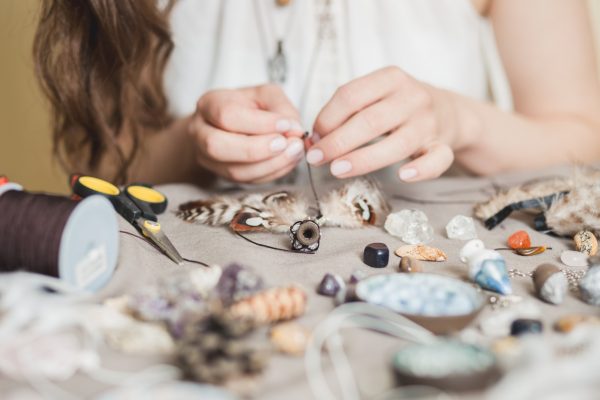
In other cultures, however, this distinction has never existed. For example, a Peruvian rug or an African mask is not considered to be a craft, but rather the preeminent visual forms of these cultures. In the 19th century, Western art historians started to label the work of these makers as ‘primitive’ on account of the consistency of their visual output. They suggested that they were incapable of innovation, and therefore, not ‘real’ artists. However, what they failed to realise was that the merit of these makers lied precisely in their ability to preserve visual cultures, rather than change them.
The return of craft
The tactile and domestic associations of craft, not to mention its relation to traditionally female pursuits, have all contributed to its lesser status within the institutional art world. This formed the basis of the feminist art movement of the 1960s, where the likes of Judy Chicago and Miriam Schapiro sought to resurrect craft as a viable artistic medium. The movement was eventually eclipsed by conceptual art, which marked a return to the heady, philosophical world of concepts and ideas, however, their efforts were not forgotten. Today, many prominent artists, such as Tracey Emin and Cindy Sherman are embracing craft once more, but this time, the art world is embracing them too.
In 2012, the artist Grayson Perry was asked in an interview with The Guardian: “Do you think there will ever come a time when craft is seen to be equal to fine art?” Since then, as if by magic, craft has been at the centre of a steady levelling, with many major museums exhibiting textiles and pottery right next conceptual or abstract works of art. It would seem as if that equality Perry was asked about is well on its way, and the art market would certainly agree. A report from the UK’s Crafts Council states that the value of craft objects sold in England more than tripled in the last thirteen years, whilst a re-evaluation of modernist crafts saw Picasso’s often-overlooked ceramics come to auction a whopping 361 times in 2020.
With gallerists and collectors keen to expand their collections, newly uninhibited by rigid categories or antiquated definitions, it is great news for craftsmen and artists alike. Times are changing, and as the art world becomes more inclusive, so too does its ideas of exactly what art can be.
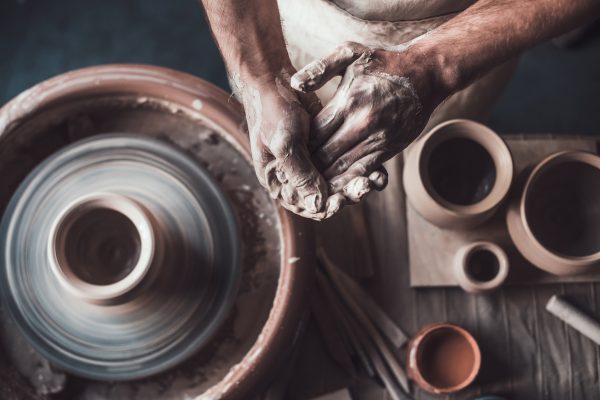
Three contemporary artists using traditional craft techniques
Tom Fruin
When you think of contemporary art, stained glass doesn’t immediately spring to mind. This traditional art form, more commonly associated with old, dusty churches has been given a new lease of life in the hands of Tom Fruin, the NYC-based artist making dazzling stained-glass structures. Often using recycled materials, his multicoloured Kolonihavehus is made from one-thousand pieces of recycled plexiglass. When lit up, it serves as a majestic viewing experience, reminding contemporary viewers of an exquisite craft of old.
Liza Lou
Between 1991 and 1996, Liza Lou was busy making a life-size replica of a kitchen. But this was no ordinary kitchen, no — Lou’s spectacular monument to female labour is made from thousands of individually placed glass beads. In an interview with the Whitney Museum, she says of the piece:
There was such a kickback around it. [People said] ‘that’s not a serious thing to do, glitzy — yuck! That’s not what serious art looks like.’ That was really exciting, too, I thought: Oh, it doesn’t look like art, then I guess it really is.
Today, she continues to blur the boundaries between fine art and craft through a variety of techniques from weaving to beading.
Jeffrey Gibson
Jeffrey Gibson is a Choctaw-Cherokee artist best known for his hybrid of Indigenous iconography and materials with the contemporary aesthetics of capitalism. “I’m drawn to handcrafted objects,” he said, “there’s an intimacy that’s triggered just by looking at them; there’s something about the labour and detail that is seductive.” He views his work as a meditative quality connected to healing and self-transformation, and regularly engages with Indigenous communities as part of his research, observing the preserved traditions of sewing, beading and quell work.

